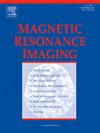Effectiveness of fat suppression methods and influence on proton-resonance frequency shift (PRFS) MR thermometry
IF 2
4区 医学
Q2 RADIOLOGY, NUCLEAR MEDICINE & MEDICAL IMAGING
引用次数: 0
Abstract
Purpose
To evaluate the effectiveness of fat suppression techniques experimentally and illustrate their influence on the accuracy of PRFS MR-thermometry.
Methods
The residual magnitudes of the main fat peaks are measured using a water-fat decomposition algorithm in an oil phantom and in vivo in swine bone marrow, either with spectral fat saturation (FS), water excitation (WE) or fast water excitation (FWE), as implemented on 1.5 T whole-body clinical MRIs. Thermometry experiments in tissue-mimicking oil-water phantoms (10 and 30 % fat) allow determining temperature errors in PRFS MR-thermometry with no fat suppression, FS and WE, compared against reference fiber optic thermometry.
Results
WE attenuates the signal of the main methylene fat peak more than FS (2 % and 22 % amplitude attenuation in the oil phantom, respectively), while the olefinic and glycerol peaks surrounding the water peak remain unaltered with both FS and WE. Within the 37 °C to 60 °C temperature range explored, FS and WE strongly attenuate temperature errors compared to PRFS without fat suppression. The residual fat signal after FS and WE leads to errors in PRFS thermometry, that increase with the fat content and oscillate with TE and temperature. In our tests limited to a single MR provider, fat suppression with WE appears to suppress fat signal more effectively.
Conclusions
We propose a protocol to quantify the remaining fraction of each spectral fat peak after fat suppression. In PRFS thermometry, despite spectral fat suppression, the remnant fat signal leads to temperature underestimation or overestimation depending on TE, fat fraction and temperature range. Fat suppression techniques should be evaluated specifically for quantitative MRI methods such as PRFS thermometry.
脂肪抑制方法的有效性及其对质子共振频移(PRFS)磁共振测温的影响。
目的:实验评价脂肪抑制技术的有效性,并说明其对PRFS磁共振测温精度的影响。方法:在1.5 T全身临床核磁共振成像上,采用水-脂肪分解算法在油模和猪骨髓中测量主要脂肪峰的残余幅度,分别采用脂肪饱和度谱(FS)、水激发谱(WE)或快速水激发谱(FWE)。在组织模拟油水模型(10%和30% %脂肪)中的测温实验允许在没有脂肪抑制的PRFS mr测温中确定温度误差,FS和WE,与参考光纤测温相比。结果:与FS相比,WE对主要亚甲基脂肪峰信号的衰减幅度更大(分别为2 %和22 %),而在FS和WE中,围绕水峰的烯烃峰和甘油峰保持不变。在37 °C至60 °C的温度范围内,与没有脂肪抑制的PRFS相比,FS和WE强烈地减弱了温度误差。FS和WE后的残余脂肪信号导致PRFS测温误差随脂肪含量的增加而增加,随TE和温度的变化而振荡。在我们仅限于单个MR提供者的测试中,WE抑制脂肪似乎更有效地抑制脂肪信号。结论:我们提出了一种方案来量化脂肪抑制后每个光谱脂肪峰的剩余分数。在PRFS测温中,尽管光谱脂肪抑制,但根据TE、脂肪分数和温度范围的不同,残余脂肪信号会导致温度低估或高估。脂肪抑制技术应专门评估定量MRI方法,如PRFS测温。
本文章由计算机程序翻译,如有差异,请以英文原文为准。
求助全文
约1分钟内获得全文
求助全文
来源期刊

Magnetic resonance imaging
医学-核医学
CiteScore
4.70
自引率
4.00%
发文量
194
审稿时长
83 days
期刊介绍:
Magnetic Resonance Imaging (MRI) is the first international multidisciplinary journal encompassing physical, life, and clinical science investigations as they relate to the development and use of magnetic resonance imaging. MRI is dedicated to both basic research, technological innovation and applications, providing a single forum for communication among radiologists, physicists, chemists, biochemists, biologists, engineers, internists, pathologists, physiologists, computer scientists, and mathematicians.
 求助内容:
求助内容: 应助结果提醒方式:
应助结果提醒方式:


